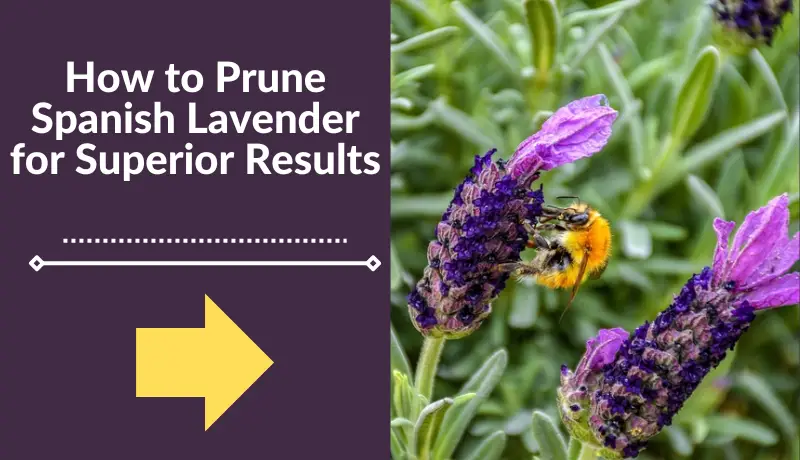Do you want to enjoy the fragrant and beautiful blooms of Spanish lavender in your garden? Learning how to prune Spanish lavender not only helps maintain its shape, but also encourages healthy growth, and prolongs the plant’s lifespan. In this blog post, we’ll guide you through the process of pruning Spanish lavender for optimal results. We’ll discuss various techniques, tools, and tips, as well as addressing common issues that may arise. Let’s dive into the aromatic world of Spanish lavender!
Short Summary
- Understanding Spanish Lavender and the importance of pruning for optimal results
- Prune in late winter/early spring, post-flowering & late fall to prepare for winter
- Use proper tools & best practices when pruning, troubleshooting common issues, propagating & how to transplant correctly.
Understanding Spanish Lavender

Spanish lavender (Lavandula stoechas), also known as butterfly lavender or rabbit’s ears, is a highly ornamental, compact plant with the following features:
- Fragrant flowers
- Evergreen, linear leaves
- Upright flower spikes that bloom in shades of pink, purple, and white
- Blooms from spring through fall
These characteristics make Spanish lavender an attractive option for gardeners who want to grow Spanish lavender, especially when considering the addition of Spanish lavender plants to their garden.
This hardy perennial thrives in USDA hardiness zones 7-10, and requires full sun, well-draining soil, and a minimum of six hours of direct sunlight per day. Spanish lavender can tolerate hot, dry conditions, making it ideal for warmer climates and water-wise landscapes. However, it can also grow well in slightly moist soil.
The Importance of Pruning Lavender

Pruning lavender is crucial for maintaining plant health, promoting new growth, and extending the plant’s lifespan. Proper pruning can significantly increase flower count, and by the third year, lavender plants become full and lush with abundant flowers.
However, if pruning is neglected, lavender may become leggy and unattractive, with long, scrawny stems below tufts of foliage and sparse flowers. Tender or semi-hardy types, such as Spanish lavender, can have a lifespan of approximately 5-7 years, while hardy English types can live for 15-20 years with proper pruning.
When to Prune Spanish Lavender
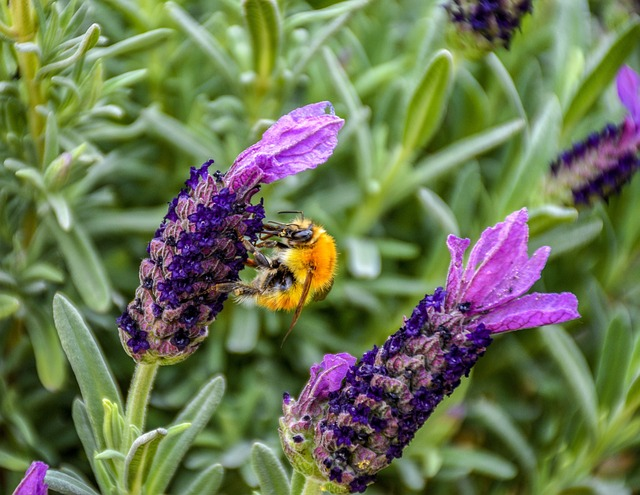
Late winter or early spring is the ideal time to prune Spanish lavender. New growth should be avoided while pruning. After flowering, pruning can help to encourage new growth and maintain a compact shape. In late fall, pruning can help with winter preparation.
Early Spring Pruning
Early spring pruning assists in shaping the plant and removing dead or damaged growth. This is the perfect time to encourage bushier growth by cutting back significantly longer branches to approximately 2 inches (5 cm) above the ground.
However, it’s essential not to cut the woody stems too far down into the old wood, as this may result in reduced blooms and hinder the plant’s growth.
Post-Flowering Pruning
Pruning after flowering stimulates fresh growth and sustains a compact form. Light pruning, also known as deadheading, involves gathering a handful of flower heads and snipping below the stems, removing an inch or two of foliage, and creating a pleasing shape. This is the recommended method for Spanish lavender.
This post-flowering pruning should be done when the flowers have wilted, removing any dead or damaged leaves and stems, and reducing the size of the plant by approximately one-third of its overall size.
Winter Preparation
Winter preparation pruning helps the plant maintain a tidy appearance and withstand colder temperatures. To achieve this, prune stems after the lavender blooms have faded and prior to the commencement of new growth in late winter.
Drastically pruning Spanish lavender to a height of 6 inches can invigorate the plants and maintain them in a dense and bushy form. This is especially important in regions where winter temperatures can be harsh.
Pruning Techniques for Spanish Lavender
To achieve optimal results with Spanish lavender, it’s essential to learn the various pruning techniques, including topping, fading, and cutting back. Each technique has its benefits and is suited to different stages of the plant’s growth and seasonal requirements.
Topping is a pruning technique that involves cutting the top of the plant off.
Topping Method
The topping method involves cutting back all stems. This encourages new growth. This should be done in early spring, directly after the first flush of flowers in late summer or early fall. By trimming all stems to a uniform height and refraining from cutting too near the base of the plant, you can promote new growth and maintain a healthy, bushy appearance for your Spanish lavender.
Fading Method
Fading is the process of removing spent flower stalks after the blooming period to foster new growth and bouquet production. This technique is beneficial in maintaining the plant’s overall health and appearance while also promoting continuous flowering throughout the growing season.
The optimal time to perform fading is when the flowers have begun to fade and turn brown. By regularly removing spent flowers, you can promote new growth and ensure a continuous display of beautiful blooms.
Cutting Back Method
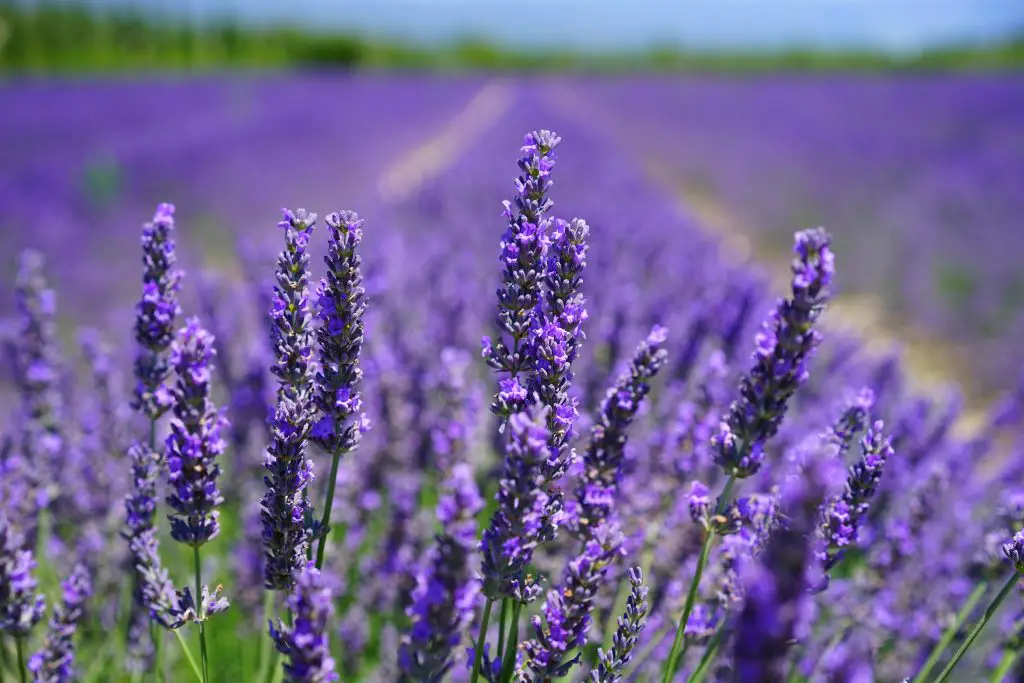
The cutting back method involves:
- Removing spent flowers and dying leaves in late winter or early spring
- Essential for maintaining the overall health and appearance of the plant
- Promoting new growth and flower production
- When cutting back, it is essential not to cut into the dead, woody growth of the plant, as this may hinder its ability to regenerate
- Instead, focus on removing the spent flowers and any damaged leaves while maintaining a mounded, mushroom-cap shape for your Spanish lavender.
Tools and Tips for Pruning Spanish Lavender
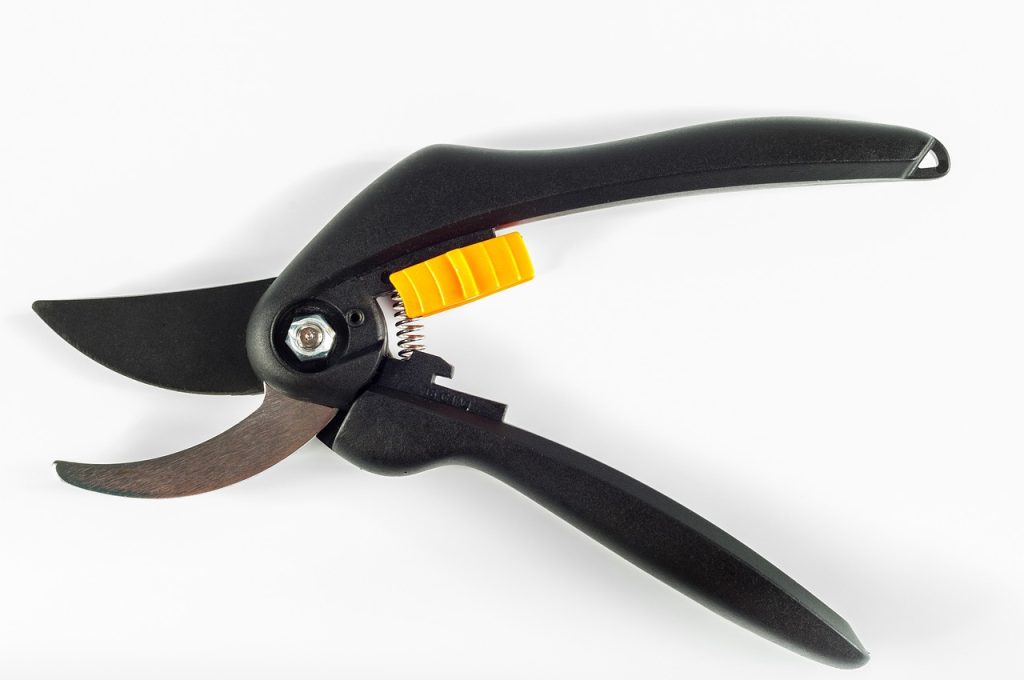
Using the right pruning tools and following best practices are key to ensuring the successful pruning of Spanish lavender. Sharp, clean pruning shears, loppers, or scissors are essential for effective pruning, while monitoring plant health and avoiding over-pruning can help maintain a healthy, vibrant plant.
Choosing the Right Pruning Tools
Sharp, clean pruning shears, loppers, or scissors are essential for effective pruning of Spanish lavender. The right tools can make all the difference in ensuring a successful pruning process and maintaining the health and appearance of your lavender plant.
Selecting the appropriate pruning tools is crucial for guaranteeing that the pruning is accomplished effectively and efficiently. By investing in quality tools, you can ensure a precise and clean cut, which is vital for the overall health and growth of your Spanish lavender.
Pruning Best Practices
Avoiding over-pruning is essential for maintaining the health and vitality of your Spanish lavender plant. Over-pruning can cause shock to the plant and diminish its capacity to bloom, so it’s important to strike the right balance when pruning.
Additionally, monitoring plant health is crucial in ensuring that your Spanish lavender is not afflicted by any pests or diseases that could impede its growth and blossoming. Regularly inspect your plant for signs of pest infestation or disease and take appropriate action if needed.
Caring for Other Lavender Varieties
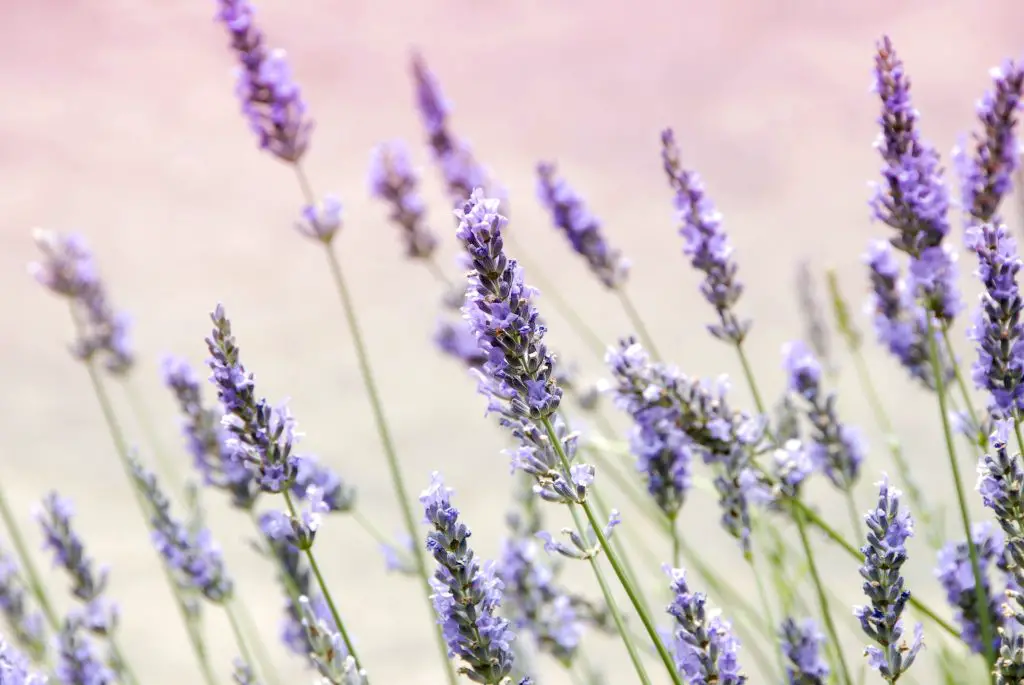
Apart from Spanish lavender, there are other lavender varieties, such as English lavender and French lavender, that can add beauty and fragrance to your garden. These varieties have similar care requirements and can be cultivated alongside Spanish lavender, making it easy to enjoy the benefits of multiple lavender varieties in your garden.
Just like Spanish lavender, English and French lavender require the following care guidelines to thrive:
- Regular pruning
- Adequate sunlight
- Well-draining soil
- Appropriate water management
By following these guidelines, you can ensure the healthy growth and blossoming of all your lavender plants.
Troubleshooting Common Spanish Lavender Issues

Common issues with Spanish lavender include pests, diseases, and leggy growth. To address these problems, it’s essential to monitor your plant’s health regularly, checking for signs of pest infestation or disease and taking appropriate action if needed.
Other factors that may contribute to a diminished flower production in Spanish lavender include excessive watering, insufficient sunlight, and a deficiency of phosphorus or potassium in the soil. By addressing these issues and following proper care guidelines, you can ensure a healthy, vibrant Spanish lavender plant with abundant blooms.
Propagating and Transplanting Spanish Lavender
Propagating and transplanting Spanish lavender is an excellent way to expand your collection and enjoy a thriving, healthy plant. Here’s how you can do it:
- Take a healthy stem cutting of Spanish lavender to propagate it.
- Remove the bottom foliage and then plant it in a seed-starting mix.
- To ensure successful root development, keep the stem cuttings in a humid environment and a sunny location.
- Make sure to maintain regular soil moisture for optimal results.
When transplanting Spanish lavender, ensure that the new location has well-drained soil, adequate sunlight, and proper water management. By following these guidelines for planting Spanish lavender, you can enjoy a thriving, healthy Spanish lavender plant that will continue to provide beautiful blooms and fragrance for years to come.
Overwintering Spanish Lavender
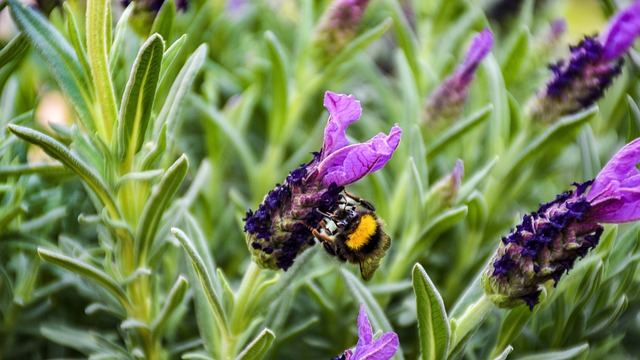
Protecting your Spanish lavender during winter is crucial, especially in colder climates. To overwinter Spanish lavender, move it indoors or provide adequate insulation to help the plant withstand lower temperatures.
If you choose to move your Spanish lavender indoors, ensure it receives at least four hours of direct sunlight daily. This will help maintain its health and vitality throughout the winter months, allowing it to continue providing fragrance and beauty in your home.
Happy Pruning!
Pruning Spanish lavender is an essential aspect of maintaining a healthy and vibrant plant. By understanding the different pruning techniques, using the right tools, and following best practices, you can ensure a thriving Spanish lavender plant with abundant blooms.
Remember, proper care and maintenance of your Spanish lavender will not only enhance its beauty and fragrance, but also prolong its lifespan. So grab your pruning shears, follow these guidelines, and enjoy the delightful scent and sight of your Spanish lavender garden!
Frequently Asked Questions
Do you need to cut back Spanish lavender?
Yes, cutting back Spanish lavender is recommended in order to promote full, lush growth. It is best to wait until after the plant’s first bloom of flowers and then trim away around a third of the growth. Doing so will help ensure that the plant continues to thrive.
When should lavender be cut back?
For best results, lavender should be cut back twice a year; once in the spring after the last frost and again in late summer after the first flowering.
When should lavender be cut back?
For best results, lavender should be cut back twice a year; once in the spring after the last frost and again in late summer after the first flowering.
How do you winterize Spanish lavender?
In order to winterize Spanish lavender, it is important to ensure good drainage in the soil, prune plants before the cold weather sets in, stop regular watering and replace this with natural rainfall, mulch the plant well and consider moving potted lavenders if they are too exposed to extreme temperatures. Good drainage is essential for winterizing Spanish lavender. Pruning should be done before the cold weather sets in. Regular watering should be stopped and replaced with natural rainfall. Mulching the plant well is also important. If the lavender is too exposed to extreme temperatures, consider moving it to a pot.
What are the different pruning techniques for Spanish lavender?
Pruning Spanish lavender requires careful techniques such as topping, fading, and cutting back in order to achieve an attractive, healthy plant. Topping removes the top two-thirds of the stems and helps promote new growth, while fading reduces the entire plant height gradually over time. Cutting back is used to keep the shape neat and full.
How can I propagate Spanish lavender?
To propagate Spanish lavender, take 4-inch stem cuttings in late spring or early summer and plant them in a seed-starting mix. Water well and allow to drain, then keep the soil moist but not soggy for best results.

David, the founder of The Garden Fixer, started with a passion for gardening in 2012. He has continued his passion for gardening and desire to improve his skills and wanted to share his journey and helpful knowledge with other like-minded individuals.
He launched The Garden Fixer as an outlet for those interested in learning more about Gardening in hopes they can take what they learn and apply it for themselves!
